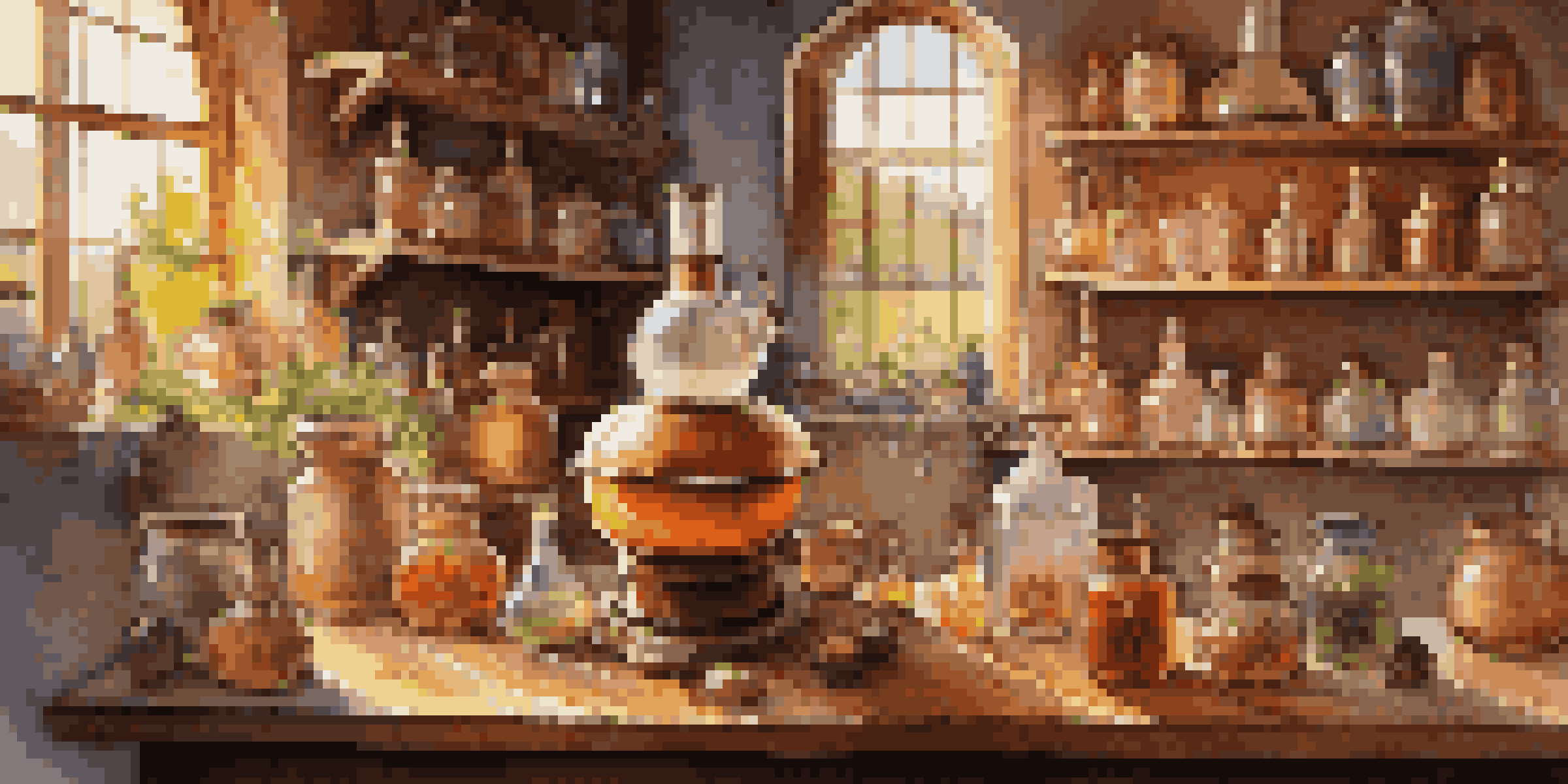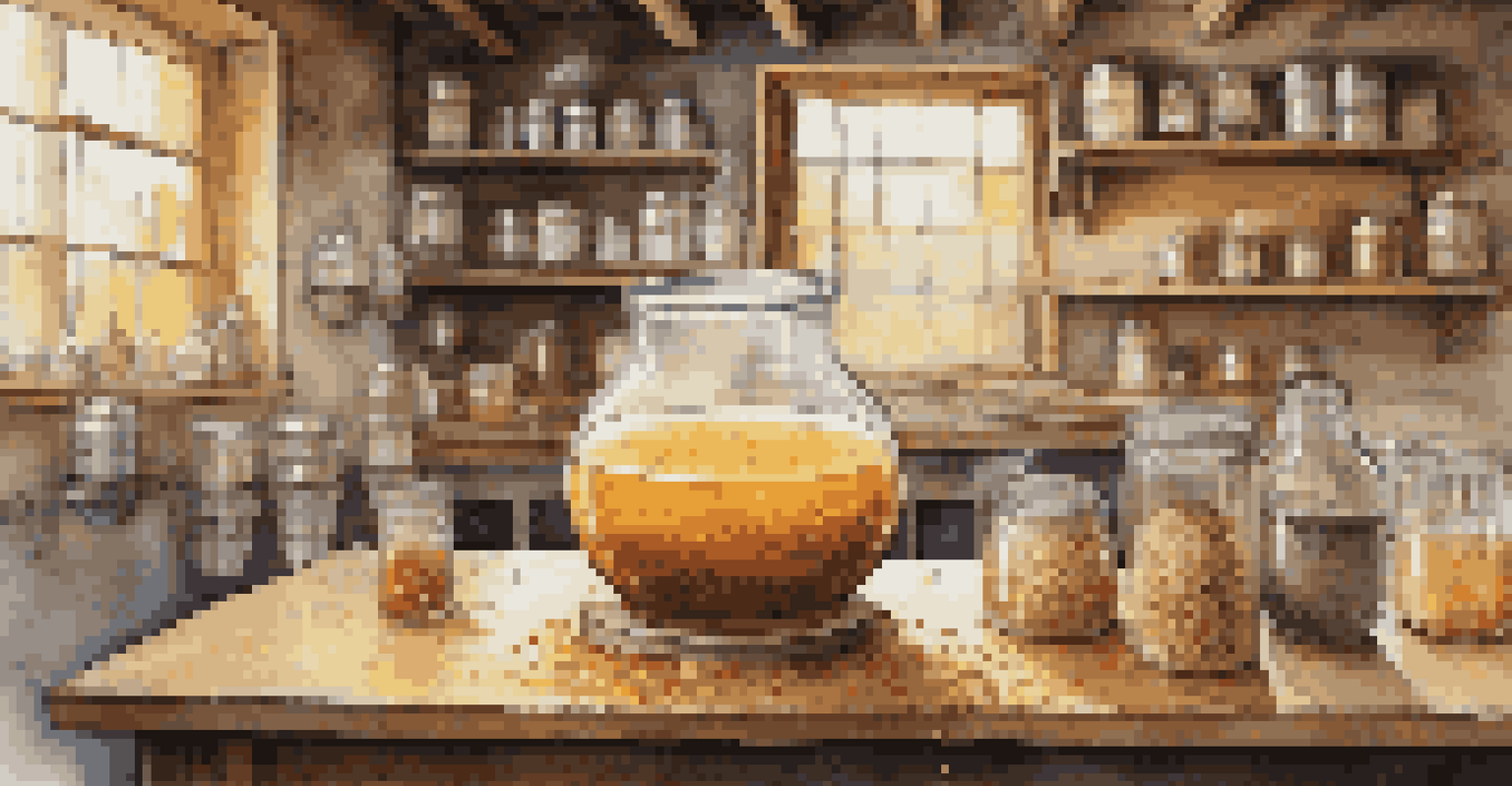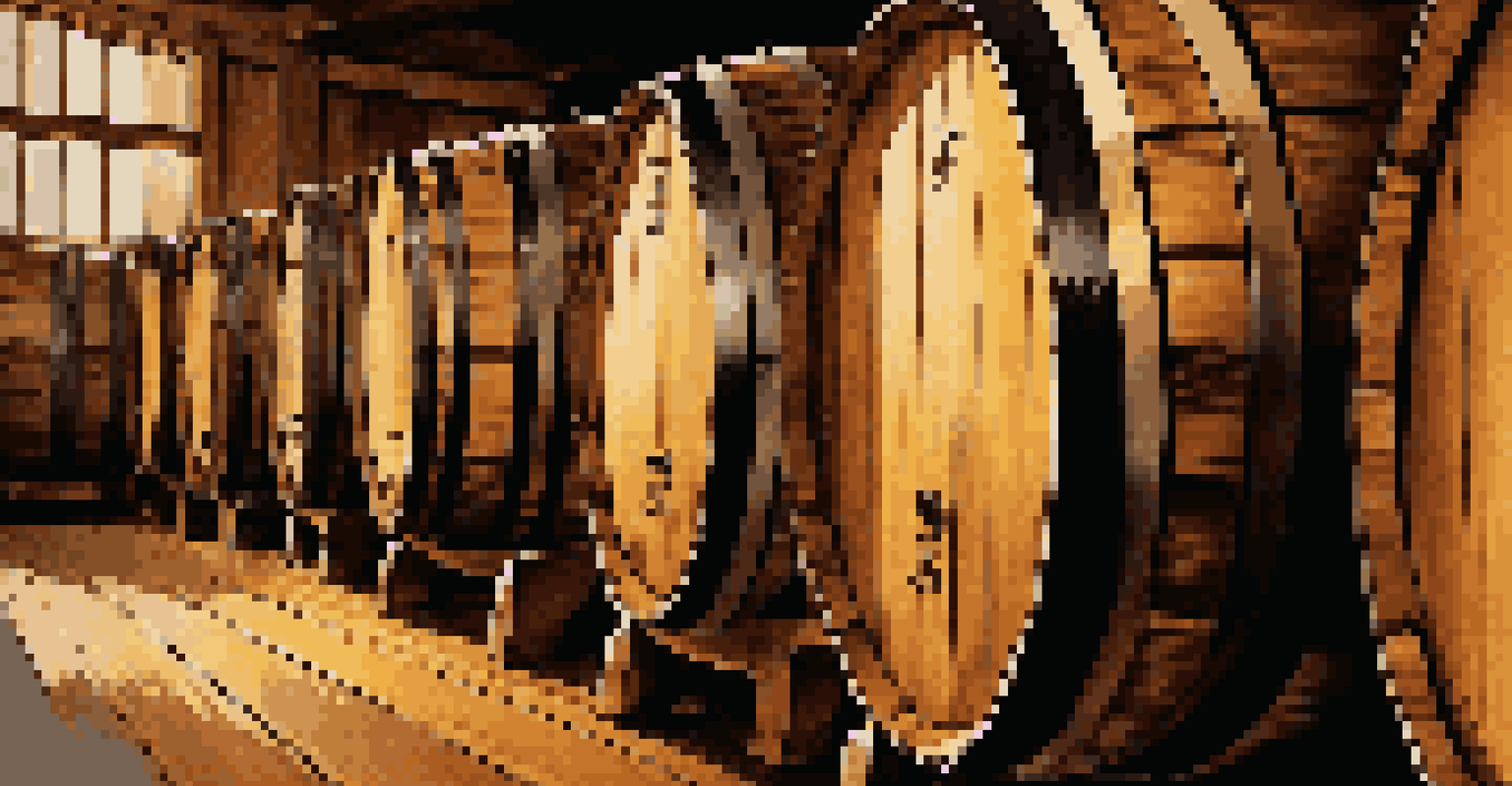Home Distilling Terminology: Key Terms Every Distiller Should Know

Understanding Distillation: The Basics Explained
Distillation is the process of separating liquids based on their boiling points. At its core, it involves heating a mixture to create vapor and then cooling it back into liquid. This technique is crucial for producing spirits, as it allows distillers to concentrate alcohol and remove impurities.
Distillation is the key to refining the raw ingredients into a spirit that is truly distinctive.
Think of distillation like making a cup of coffee. When you brew coffee, you extract flavor by using hot water, creating a rich liquid. In distillation, you're extracting alcohol and flavors from a fermented mash or wash, turning it into something more potent.
Understanding this foundational process is key for any aspiring distiller. It not only helps clarify the goals of your craft but also sets the stage for exploring the intricacies of home distilling.
Fermentation: The First Step to Distillation
Fermentation is the magical process that transforms sugars into alcohol, thanks to yeast. Before you can distill anything, you need a fermented base, often referred to as 'wash.' This mixture typically includes water, sugar, and yeast, which work together to create alcohol.

Imagine fermentation as a party where yeast is the guest of honor, feasting on sugars and producing alcohol as its byproduct. This lively process can take anywhere from a few days to weeks, depending on various factors like temperature and the type of yeast used.
Getting fermentation right is crucial for the final product's quality. If the wash isn't well-prepared, it can lead to unwanted flavors or low alcohol content during distillation.
What is a Still? Your Essential Distilling Equipment
A still is the heart of any distilling operation, serving as the device used to separate alcohol from the wash. There are various types of stills, including pot stills and column stills, each offering unique advantages and characteristics. Understanding these differences can help you choose the right one for your distilling needs.
The art of distilling is about understanding the delicate balance between science and craft.
Think of a still like a fancy coffee maker, where the wash is brewed and transformed into something entirely different. In a pot still, the process is all about batch distillation, while column stills operate continuously, allowing for higher efficiency and purity.
Choosing and mastering your still is a pivotal step in your distilling journey. The type of still you select can significantly influence the flavor profile and quality of your final spirit.
ABV: Alcohol by Volume and Its Importance
ABV, or Alcohol by Volume, is a standard measure that indicates the percentage of alcohol in a beverage. This measurement is crucial for distillers, as it helps determine the potency of the final product. Understanding ABV allows you to create spirits that align with your preferences and those of your potential consumers.
Think of ABV like the strength of a coffee – a stronger brew can have a more pronounced flavor, just like higher ABV spirits can offer a more intense experience. Most spirits range from about 40% to 50% ABV, but knowing how to adjust this is key to making your signature drink.
As you distill, keeping an eye on ABV will help you produce drinks that are not only enjoyable but also safe. Too high an ABV can lead to dangerous consumption levels and off-putting flavors.
The Role of Mash: Creating Your Distilling Base
Mash refers to the mixture of grains, water, and heat that breaks down starches into sugars, which yeast will later ferment. Different grains can produce unique flavors and aromas, making the choice of mash vital for your spirit's character. Understanding how to prepare mash is an art that every distiller should master.
Picture mash as the dough in bread-making – the quality and type of ingredients will define the final product. Just as bakers experiment with different flours, distillers can play with various grains to develop signature spirits.
A well-prepared mash can elevate your distilling game, enhancing flavors and maximizing fermentation efficiency. By experimenting with different recipes, you can create a distinct base that sets your spirits apart.
Cutting: The Process of Selecting Distillate Fractions
Cutting is the term used to describe the practice of separating the distillate into different fractions during the distillation process. These fractions are typically categorized into heads, hearts, and tails, each offering unique flavor profiles. Understanding how to make these cuts is essential for producing high-quality spirits.
Think of cutting like sorting through a box of chocolates – the heads might be the overly sweet or harsh flavors, while the hearts represent the smooth, desirable center. The tails, on the other hand, can contain off-flavors that you may want to avoid in your final product.
Mastering the art of cutting allows distillers to create spirits that are balanced and flavorful. It’s a skill that develops with practice and experience, leading to a more refined and enjoyable spirit.
Aging: The Secret to Flavor Development
Aging is the process of storing spirits in barrels or other containers for a period, allowing them to develop deeper flavors and aromas. This maturation process can significantly enhance the quality of your spirit, adding complexity and character. Barrel types, time, and environmental factors all play a role in how aging influences the final product.
Imagine aging like fine wine – just as wine improves with time in the bottle, spirits can evolve beautifully in wooden barrels. The wood interacts with the liquid, infusing it with flavors while also mellowing sharp edges.

Understanding how aging works is crucial for creating your desired spirit profile. Each aging experiment can lead to exciting new flavors, making it a delightful part of the distilling journey.